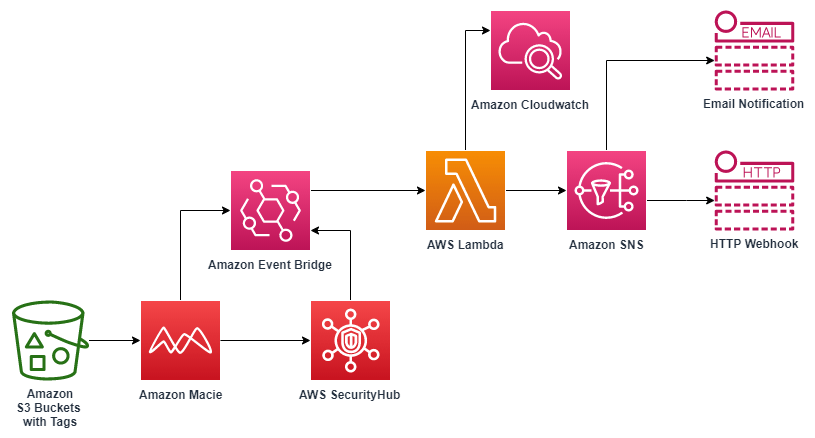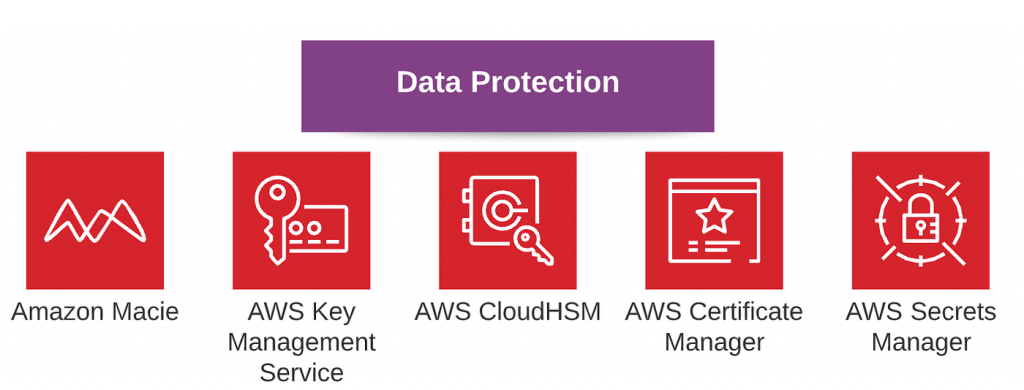
- Overview of AWS Macie
- How Macie Works for Data Security
- Detecting Sensitive Data with Macie
- Macie Integration with AWS Security Services
- Compliance and Use Cases
- Best Practices for Data Protection
- Conclusion
“Enhancing Data Security with AWS Macie: Features and Benefits” explores how AWS Macie helps organizations protect sensitive data by leveraging machine learning and artificial intelligence to automatically discover, classify, and protect personal and sensitive information. The guide highlights key features such as real-time data discovery, risk identification, and automated compliance reporting, essential topics covered in AWS Training to equip learners with the skills to manage and secure cloud environments effectively. It also outlines the benefits of using Macie, including improved data visibility, enhanced security posture, and streamlined compliance with regulations like GDPR and CCPA. With its scalable and cost-effective approach, AWS Macie enables organizations to safeguard critical data, minimize security risks, and ensure data privacy across cloud environments.
To Earn Your AWS Certification, Gain Insights From Leading AWS Experts And Advance Your Career With ACTE’s AWS Certification Training Today!
Overview of AWS Macie
AWS Macie is a fully managed data security service that uses machine learning and pattern matching to automatically discover, classify, and protect sensitive data in Amazon S3. Specifically designed to help organizations safeguard sensitive information like personally identifiable information (PII), financial data, and intellectual property, Macie offers robust tools for data protection at scale. By leveraging advanced machine learning algorithms, Macie can identify sensitive data without manual intervention, ensuring a proactive approach to security and reducing the risk of human error it continuously monitors data stored in Amazon S3 providing real time alerts when sensitive data is detected enabling businesses to act swiftly to prevent data exposure or breaches.
AWS Macie helps organizations meet a wide range of compliance requirements, such as GDPR, HIPAA, and PCI DSS, ensuring they remain compliant with industry regulations, a concept that aligns with Understanding Azure Tenants Definition and Overview for managing compliance and security in cloud environments across different platforms. Additionally, Macie offers detailed insights and reporting, making it easier for businesses to maintain control over their data and demonstrate security best practices to auditors. With its automated discovery and classification of data, businesses can mitigate the risks associated with data exposure, unauthorized access and misuse, ultimately strengthening their overall security posture and enhancing customer trust in their cloud environments.
How Macie Works for Data Security
- Data Discovery and Classification: Macie continuously scans Amazon S3 buckets to discover and classify sensitive data such as PII and other private information, a process that aligns with What is Utility Computing by enabling on-demand, scalable data protection services in cloud environments. It uses machine learning models to detect and classify the data into predefined categories like “PII,” “financial information,” and more. Once the data is classified, Macie generates findings that detail the level of sensitivity of the data and its potential risks, enabling organizations to take immediate action.
- Sensitive Data Detection: Macie machine learning models are trained to recognize a wide variety of sensitive data types, including but not limited to PII, health records and other confidential information. As data is stored in S3, Macie actively scans for patterns that match these types of sensitive data, reducing the risk of human error and misclassifications. Macie continuously improves its detection capabilities over time through machine learning, increasing accuracy and reducing the chances of false positives.
- Automated Data Security: Automating the detection and classification of sensitive material is one of Macie’s primary features. This provides real time insights about data security weaknesses and areas for development by doing away with the requirement for manual scanning and tagging of sensitive data. Macie integrates with AWS security services to automate remediation actions, such as restricting access to sensitive data or initiating alerting mechanisms if data leaks are detected.
- PII Detection: Macie primarily focuses on detecting Personally Identifiable Information (PII), which includes details such as names, addresses, email addresses, phone numbers, and financial data like credit card numbers or bank account information. Using advanced pattern matching, Macie scans through unstructured data in Amazon S3 and applies machine learning to automatically identify PII, even in complex formats like PDFs or images.
- Custom Data Types: Macie allows users to create custom data types, enabling it to detect specific types of sensitive data unique to an organization’s needs, a concept that can be applied in Docker in Linux Software Development to create customized environments for secure data management in containerized applications. For example an organization can define custom policies for financial records, proprietary business data, or legal documents. This capability enable organizations to tailor Macie detection mechanisms according to their specific data protection requirements.
- Granular Data Insights: Once sensitive data is detected Macie provides granular insights into how the data is distributed across S3 buckets. It offers detailed reports on the amount of sensitive data where it is stored and which users or services are accessing it. This transparency enable organizations to understand their exposure to sensitive data and take appropriate action to protect it.
- Integration with AWS CloudTrail: AWS Macie can be integrated with AWS CloudTrail to track and log access to sensitive data. CloudTrail records API calls made to Macie, providing a complete audit trail of all activities related to data scanning, discovery and remediation action. With real time detection of potential abnormalities and monitoring of sensitive data access the integration enables organisations to maintain compliance with security regulations.
- Integration with AWS IAM: Macie enforces access control policies by effortlessly integrating with AWS Identity and Access Management, a crucial feature for securing Cloud-Native Applications by managing access and permissions within dynamic cloud environments. By controlling who has access to sensitive data, organizations can limit the risk of unauthorized data access. IAM policies help ensure that only authorized users and roles can interact with sensitive data discovered by Macie, reinforcing the principle of least privilege.
- AWS Security Hub: Macie findings can be integrated into AWS Security Hub, allowing organizations to centralize and prioritize security alerts by bringing together Macie’s findings with other security events from various AWS services, Security Hub provides a single, comprehensive view of security risks across your environment. Security Hub can correlate Macie findings with findings from other AWS services like GuardDuty and Inspector, helping security teams take coordinated action across multiple resources.
- AWS Config: AWS Config integrates with Macie to monitor changes to S3 buckets and other resources impacting data security. This integration enables you to set compliance rules that track sensitive data configurations, ensuring they align with organizational security policies. By continuously evaluating resource configurations, AWS Config helps identify unauthorized changes, reduce the risk of data breaches and automate auditing and enforcement, strengthening overall data protection and compliance efforts across your cloud environment.
- Regular Data Classification: Regularly scan and classify data in Amazon S3 to ensure sensitive information is correctly identified and protected. While Macie provides automated classification, it essential to continuously review data storage practices and make adjustments as necessary. Data classification should be part of an ongoing data security strategy to adapt to changing business requirements and regulatory changes.
- Enforce Strong Access Controls: Macie identified critical data and used AWS Identity and Access Management to impose strict access limits, reducing the chance of data exposure by making sure that only authorized users and services can access or alter sensitive data, a crucial step in a Seamless Cloud Migration Guide to ensure secure data handling during the transition to the cloud. Implement encryption at rest and in transit to further protect data, especially when it is being moved between services or accessed by external applications.
- Integrate Macie with Other AWS Security Services: To build a complete data security ecosystem, take advantage of Macie connections with services like AWS CloudTrail and AWS Config. Organisations can improve security posture and proactively handle possible risks by integrating Macie’s results with other security warning. Automate remediation using AWS Lambda and other AWS services to quickly mitigate risks and take action based on Macie’s findings.
- Establish Data Retention Policies: Implementing robust data retention policies is key to managing sensitive data securely with AWS Macie businesses can identify outdated or unused sensitive data and take appropriate action such as securely archiving or deleting unnecessary information This approach ensure compliance with legal regulations reduces security risks and optimizes data management by minimizing the exposure of sensitive data while maintaining storage efficiency.

Are You Interested in Learning More About AWS? Sign Up For Our AWS Certification Training Today!
Detecting Sensitive Data with Macie
Macie Integration with AWS Security Services
Looking to Master Cloud Computing? Discover the Cloud Computing Masters Course Available at ACTE Now!
Compliance and Use Cases
AWS Macie helps organizations meet various regulatory compliance requirements, such as GDPR (General Data Protection Regulation), CCPA (California Consumer Privacy Act) and HIPAA (Health Insurance Portability and Accountability Act). These regulations mandate strict control over the collection, processing and storage of sensitive data, including PII. By automating the discovery and classification of sensitive data Macie ensures that organizations can quickly identify and protect data subject to compliance regulations, making it easier to demonstrate compliance during audits. In industries where data security and privacy are paramount Macie plays a crucial role in safeguarding sensitive information from unauthorized access. For example, healthcare organizations can use Macie to detect and protect patient health information, while financial institutions can secure sensitive financial data, all of which are key concepts discussed in AWS Training to understand data security and compliance in cloud environments. Macie is a useful tool for companies that care about privacy since it helps them understand where sensitive data is stored, who can access it, and how to reduce risks.

Incident Response in the event of a potential data breach or leak Macie automated detection and reporting mechanisms help security teams respond quickly. Macie can trigger alerts and integrate with AWS Lambda to automate remediation actions, such as moving sensitive data to a more secure location or revoking access. This ability to quickly respond to incidents allows organizations to minimize the impact of data breaches and prevent further exposure. Data Protection for Intellectual Property AWS Macie helps companies in tech and media protect intellectual property (IP) by automatically classifying and securing sensitive data like trade secrets and designs. By preventing accidental or malicious exposure, Macie mitigates competitive, financial and legal risks its proactive approach ensures compliance with industry regulations, supports business continuity and fosters trust among customers, partners and stakeholders, allowing organizations to maintain a competitive edge.
Best Practices for Data Protection
Preparing for a AWS Job Interview? Check Out Our Blog on AWS Interview Questions and Answers
Conclusion
One effective method for safeguarding private information in the cloud is AWS Macie capacity to automate data security, classification and discovery helps businesses keep control over their data, adhere to legal obligations and lower the risk of data breaches. By leveraging advanced machine learning, Macie can identify and monitor sensitive data such as personally identifiable information (PII), intellectual property and financial records. By integrating Macie with other AWS security services and following industry best practices, businesses can enhance their data protection strategies, mitigate risks, and strengthen their overall security posture in the cloud, a crucial aspect taught in AWS Training to ensure effective cloud security management. With Macie, organizations gain deep visibility into their data ensuring robust privacy protection and compliance with evolving data governance regulations.





